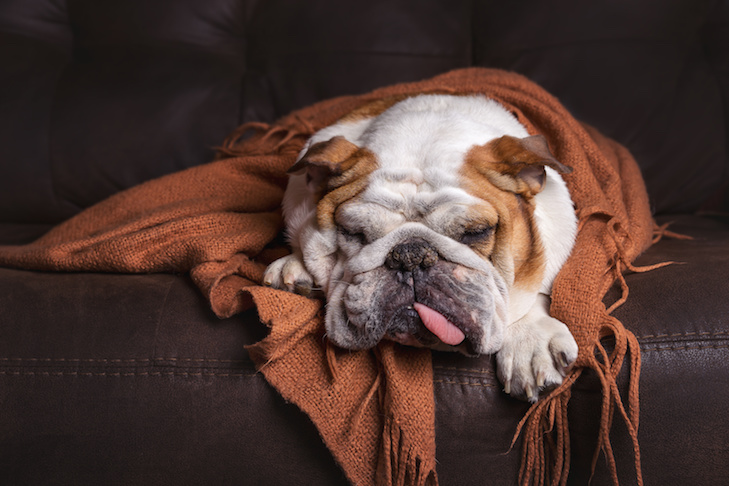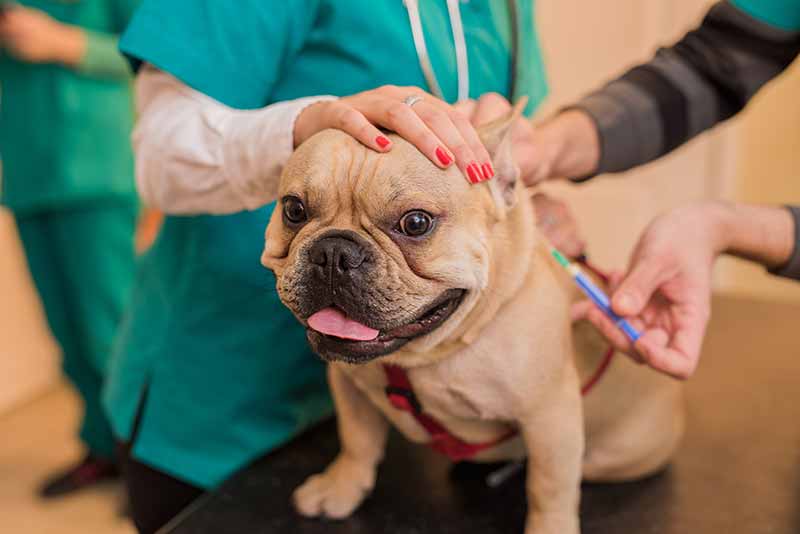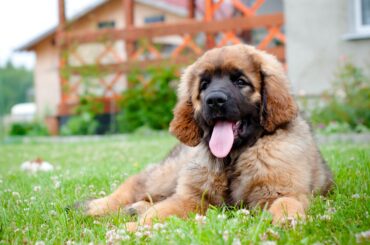Canine influenza, often known as dog flu, is a contagious respiratory disease in dogs caused by Type A influenza viruses that have been identified as infecting canines. These viruses are known as canine influenza viruses. Canine influenza is an illness that affects dogs. There are two types of influenza A viruses in dogs: one is an H3N8 virus, and the other is an H3N2.
Horses are the source of the H3N8 strain. Around 2004, when the first epidemics struck racing Greyhounds at a Florida track, the virus moved from horses to dogs, becoming canine influenza virus. H3N2, on the other hand, is thought to have originated in Asia and spread from birds to dogs. H3N2 is the virus that caused the canine influenza outbreaks in the Midwest in 2015 and 2016.

Table of Contents
Spreading of canine influenza
The virus that causes canine influenza is very easy to spread. Sneezing, coughing, and nasal discharge spread CIV, as do contaminated things including kennel walls and floors, food and water bowls, collars and leashes, and the clothing and skin of individuals who come into touch with diseased dogs. CIV can live for up to 48 hours on skin and hands, 24 hours on clothing, and 12 hours on surfaces. The canine influenza virus has no season, thus infections can happen at any time.
The incubation period for canine influenza is two to four days after initial contact with the virus. After the fourth day, viral shedding begins to diminish, although dogs with H3N8 can be infectious for up to 10 days after exposure, while dogs with H3N2 can be infectious for up to 26 days. To limit the danger of transmission, most veterinarians recommend isolating dogs with H3N2 for at least 21 days.

Almost all dogs who come into touch with the disease will get sick, however, not all affected dogs will display symptoms. Although about 20-25 percent of sick dogs are asymptomatic, they can still spread the disease. Even though the majority of infected dogs have a mild form of canine influenza and recover without complications, some dogs acquire severe, life-threatening pneumonia.
Diagnosis
Canine influenza cannot be identified only on the basis of clinical indicators since it is so similar to other respiratory illnesses. A nasal swab for a polymerase chain reaction (PCR) test can be submitted to a veterinary diagnostic lab if a veterinarian sees a dog during the first few days of the development of clinical indications.
If the PCR test comes out positive, the dog is most certainly infected with Canine Influenza Virus. PCR results are less likely to be accurate after four days of sickness. Blood testing for Canine Influenza Virus antibodies should be done at this point. Serology is a sort of testing that involves comparing antibody levels two to three weeks apart.
Symptoms of canine influenza
The following are the symptoms of canine influenza
- Breathing difficulties
- Nasal discharge
- Coughing which includes both moist and dry
- Sneezing
- Purulent nasal discharge
- Runny eyes
- Fever
- Lethargy
Treatment and prevention of canine influenza

Dog flu has no known cure. Treatment is supportive, and your veterinarian can advise you on how to make your dog as comfortable as possible throughout his illness and recuperation. Some dogs may require supportive care, such as water and nonsteroidal anti-inflammatory drugs, to aid in their recuperation. Your veterinarian will assist you in developing a diet plan and may prescribe medications to treat subsequent bacterial illnesses.
Depending on the strain of the virus your dog develops, your veterinarian can also advise you on proper quarantine methods to avoid the spread of dog flu, as well as disinfectant remedies to use in your home to help kill the virus.
The easiest method to keep your dog safe from canine flu is to keep him away from public locations or kennels where cases have recently been reported. This reduces the danger of infection spreading from you to your dog. In order for dogs to generate a sufficient immune response and recover faster, good nutrition and husbandry are essential. Canine influenza vaccinations are available for both the H3N8 and H3N2 viruses. Depending on your lifestyle, your veterinarian may recommend the immunization.
RECOMMENDED ARTICLES
- Diabetes In Dogs- Causes, Risk Factors And Treatment
- Destructive Behavior In Dogs- Causes, System And Treatment
- Gastric Dilatation-Volvulus (GDV) in Dogs




